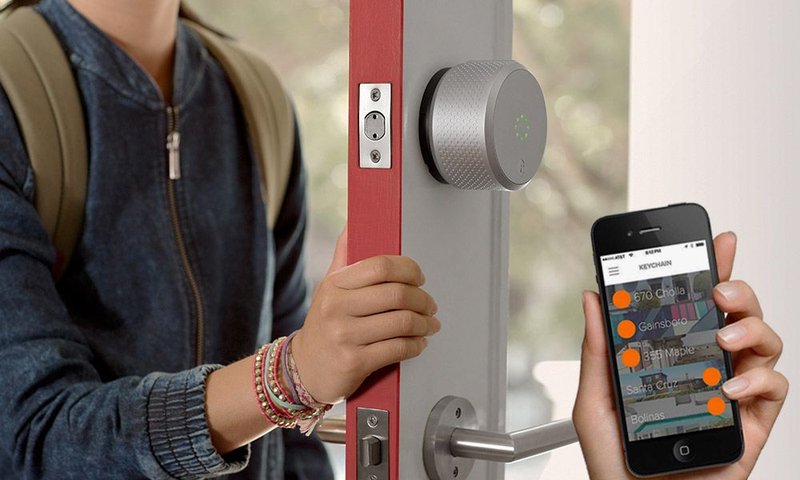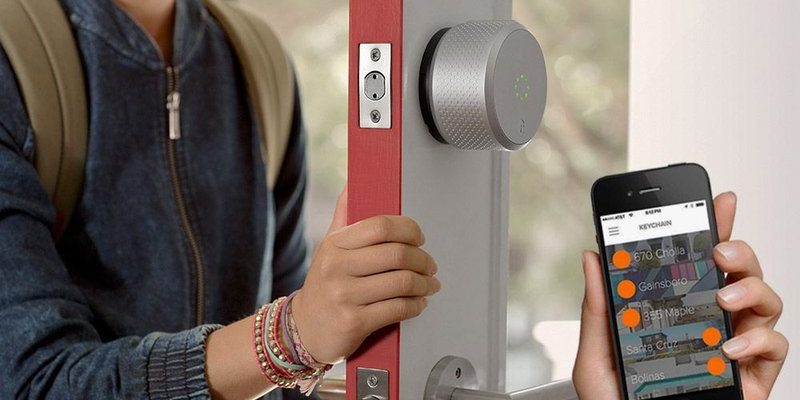
Here’s the thing: whether you’re using a Yale, Schlage, or August smart lock, the real protection depends on your habits and choices. Sure, these locks have cool features and slick apps, and they’ll even sync with your smart home system. But if you pick a weak passcode or forget to change it from time to time, you’re inviting risk. So, let’s dig into practical ways to keep your smart lock passcodes safe—no jargon, just real advice you can actually use.
Why Smart Lock Passcode Security Matters
You might be wondering why you even need to worry about passcodes when your front door is already locked by default. Here’s the deal: *smart locks* add a digital layer to security, but hackers and snoops love to exploit the “human” side. Weak codes, reused PINs, or codes written on sticky notes—these small habits create big vulnerabilities.
Someone doesn’t need technical wizardry to break in if your code is guessable or easy to spot. A delivery driver, babysitter, or even a neighbor who knows your birthday might try 0410 as your PIN, and if they’re right, your high-tech lock isn’t protecting anything. The point is, the lock’s advanced features (like remote control, auto-lock, or battery alerts) are only as good as the passcode that stands guard.
It’s not just about criminals, either. Sometimes you have to sync a new phone, troubleshoot a connection issue, or reset the lock after a battery change. If your code management is sloppy, you’ll end up locked out—embarrassing and inconvenient. So, smart passcode habits help you avoid headaches and keep your home safe.
How to Create Strong, Memorable Smart Lock Passcodes
Let me explain what makes a strong passcode. It’s not just about length or randomness. It’s about choosing something that’s hard for others to guess, but easy for you to remember when you need to enter it quickly—especially at night, arms full of groceries, or juggling kids and packages.
Here are some practical tips:
- Avoid the obvious: Don’t use 1234, 0000, or your address.
- Mix it up: Many smart locks allow 4–8 digit codes. Use the max length if possible.
- Steer clear of birthdays: Yours, your kids’, or even your pets’ birthdays are too easy.
- Break patterns: Combine numbers in a way that isn’t sequential on the keypad.
Here’s a trick I use: take a memorable phrase (say “I Love My Dog Rusty”) and turn it into a numeric passcode using a phone keypad (e.g., 4566 for LOVE). Or combine two unrelated numbers, like the last two digits of a friend’s phone number and your favorite year. Basically, find what makes sense for you, but don’t make it something a stranger could guess from your mailbox or social media.
Changing Your Passcode Regularly (And How to Remember It)
Honestly, most people set a passcode once and forget it. The problem is, you share it with trusted people—family, sitters, house cleaners—who might, intentionally or accidentally, spread it further. Changing your smart lock passcode every few months stops “digital drift” and limits risk if someone you trusted no longer needs access.
It’s tempting to delay changing codes because you’re afraid you’ll forget the new one. Here’s how to make the swap less painful:
- Sync code changes with life events: Start a new pin at the start of a season, or after a big holiday.
- Write it down—but store it safely: A password manager app works for passcodes, too. Or, if you prefer analog, write it in a notebook you keep hidden.
- Update anyone who needs it: When you reset your smart lock, immediately pair or sync the new code with family members or roommates.
Resetting passcodes is usually easy—most August, Yale, or Schlage locks let you do it right from the mobile app or by following prompts on the keypad. If you’re stuck or something isn’t syncing, don’t panic. Check the manual or look up troubleshooting steps for your specific model. It’s a hassle, but it’s worth the peace of mind.
Who Should You Share Your Smart Lock Passcodes With?
You might think you’re being helpful by giving your code to a neighbor or cousin “just in case.” But every new person with your passcode is another link in the security chain—one that can break, intentionally or not. So, how do you decide who to trust?
Here’s a simple rule: only share your smart lock passcode with people who really need it, and as rarely as possible. Family members you live with, sure. A regular pet-sitter? Okay, if you trust them. But for guests, cleaners, or contractors, take advantage of features like “temporary” or “one-time use” codes instead of your main PIN.
Most modern smart locks, whether they’re August, Kwikset, or Schlage, allow you to set up secondary codes. These can expire after a certain date or get revoked with a tap in the app. That way, if you lose track, you aren’t forced to reset everything for your entire household.
When in doubt, give someone a temporary code. If they really need ongoing access, you can always upgrade later—but you can’t “take back” a code once it’s out.
Managing Passcodes With Apps and Remote Controls
The real magic of smart locks is the digital control panel. Instead of fiddling with little rubber buttons, you can often manage everything from your phone—even while you’re away. Most brands now offer Bluetooth syncing, remote unlock, and passcode management straight from their app.
Here’s why this is a game changer:
- Easy resets: Forgot who has your code? Just generate a new one and sync it remotely.
- Instant notifications: Some apps will alert you when someone unlocks the door with their code—handy for parents, hosts, and Airbnb owners.
- Lost or changed phones: If you need to pair a new device, apps usually walk you through the process. Just be sure to reset the codes if you lose your phone or suspect your account was compromised.
Pairing your smart lock with home assistants or external remotes (like a key fob or voice command device) offers more ways to get in, but also more ways for things to go wrong. Always lock down your phone, use two-factor authentication, and review device permissions in the app. Don’t forget about battery life, either; a dying smart lock can leave you locked out, no matter how clever your passcode is.
What To Do If You Suspect Your Passcode is Compromised
Sometimes, you just get that weird feeling—maybe your code was overheard, or someone entered your home who shouldn’t have. Don’t ignore it! Take it seriously and act fast to secure your smart lock.
Steps to follow if you think your passcode is exposed:
- Immediately reset the passcode in your lock’s app or on the keypad.
- Delete any temporary or guest codes that might no longer need access.
- Check for unauthorized access logs if your brand’s app tracks entries—look for unfamiliar timestamps or names.
- Change associated account passwords if your lock is connected to a smart home hub or Wi-Fi.
- Pair any new phones/devices securely, and troubleshoot any sync or reset problems right away.
You might think, “That’s kind of overkill.” But digital break-ins don’t leave broken glass or obvious damage. A little paranoia is healthy when it comes to locks—digital or not.
Comparing Smart Lock Passcodes to Other Access Methods
Not all smart locks use passcodes. Some use fingerprint sensors, physical keys, or even virtual “keycards” through apps or remotes. So, how do passcodes stack up?
Passcodes offer:
- Convenience: Free your hands—no more digging for keys.
- Shareable access: Easy to give temporary codes to family or guests.
- Quick resets: No need to rekey a lock if someone moves out or loses access.
But there are trade-offs. Biometric locks can’t be guessed, but sometimes fail to sync or have issues with dirty fingers. Mobile app access can be lost if your phone battery dies or your account is hacked. Physical keys are always a backup, but if lost, you might need to rekey your lock—an expensive hassle.
Many folks use a mix: passcodes for regular use, backup keys for emergencies, and app-based controls for remote troubleshooting or entry. Honestly, the best choice is the combo that works for your lifestyle—just always treat your passcode as seriously as any other key.
Tips for Keeping Your Smart Lock Safe Beyond Passcodes
Securing your smart lock isn’t just about setting a strong passcode. Smart home safety is a package deal. You’ll want to watch for weak spots elsewhere:
- Keep firmware updated: Manufacturers push out patches that fix bugs and close holes. Enable auto-updates on your lock’s app if possible.
- Protect your Wi-Fi network: If your lock connects via Wi-Fi, use a strong router password and update it regularly.
- Monitor battery life: Many smart locks have a low-battery alert. Don’t ignore it—if the lock dies, your passcode is useless until you replace the battery.
- Watch for physical tampering: Even a digital lock can be forced open if not installed properly. Check screws and mounting plates every few months.
Your smart lock is as trustworthy as the ecosystem around it. If your phone is unsecured, your Wi-Fi password is leaked, or your backup keys are under the doormat, your fancy passcode won’t save you. Think of it as protecting the whole house, not just the front door.
Closing Thoughts on Smart Lock Passcode Security
At the end of the day, a smart lock is there to make your life easier, not more stressful. But it’s only as strong as the passcode habits you build around it. Pick something strong and memorable, change it every so often, and only share it with people who genuinely need it. Use the remote features and app syncing to stay on top of things, and don’t let little slips—like writing down a code or ignoring battery warnings—undo the whole point of your investment.
If you ever feel stuck, remember: you can always reset the passcode, pair a new phone, or ask for help from the brand’s support. Staying vigilant with your smart lock passcodes doesn’t have to be a chore. Just put a few smart habits in place, and you’ll enjoy both the convenience and real security these devices promise. Stay safe, and let your smart lock make your world a little simpler.
